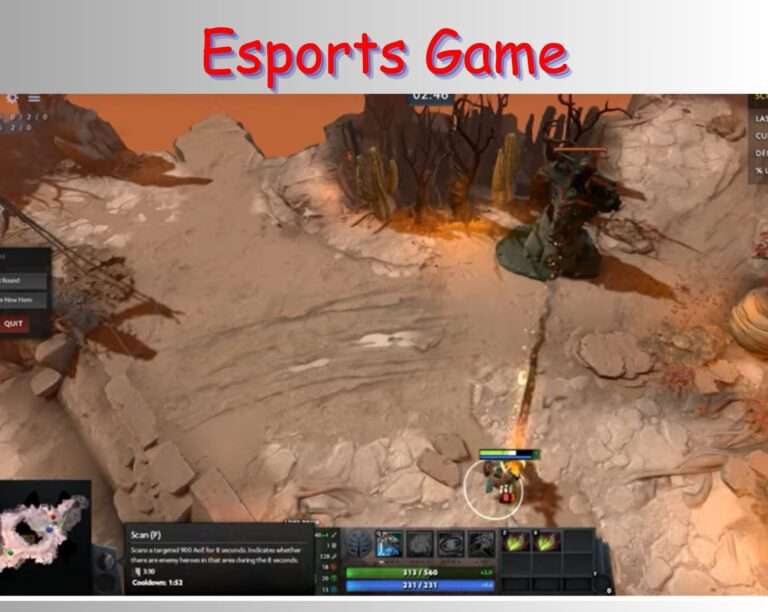
Tired of waiting forever for games to load and dealing with laggy graphics? Well, gamers, get ready to explore the world of PCIe vs SATA SSDs for gaming – it’s like entering a high-speed race!
Forget about those slow, old-fashioned hard drives. We’re talking about super-fast storage options that can take your gaming experience to a whole new level. But here’s the big question: which SSD is the best for top-notch gaming?
Is PCIe the absolute champion, zooming past SATA with its super-fast speeds? Or does SATA still hold its own, giving you a more budget-friendly way to enjoy gaming?
We’ll cover everything you need to know about PCIe vs SATA SSDs for gaming. This will guide you to choose wisely.
Contents
- 1 Understanding SSD Interfaces: PCIe vs SATA
- 2 PCIe vs SATA SSD: Benchmarks and performance comparisons
- 3 PCIe vs SATA SSDs for gaming: AAA Games
- 4 NVMe PCIe 4.0 vs 5.0 vs SATA III for Esports Games
- 5 PCIe vs SATA SSDs for gaming: Performance analysis for Call of Duty series Games
- 6 FAQ
- 7 What technologies can we anticipate in future SSDs?
- 8 Conclusion
Understanding SSD Interfaces: PCIe vs SATA
When it comes to storage solutions for your computer, Solid State Drives (SSDs) reign supreme. But before you dive into the world of blazing-fast speeds, you need to understand the language they speak – the interface. Two main contenders rule the arena: PCIe and SATA. Let’s break them down!
A. PCIe (Peripheral Component Interconnect Express)
Imagine a highway for data, with multiple lanes for traffic flowing smoothly. That’s PCIe in a nutshell.
1. Architecture:
- PCIe connects directly to the CPU, bypassing bottlenecks like the SATA controller.
- Think of it as a dedicated express lane to your processor, instead of sharing the road with other peripherals.
2. Speed Advantages:
- PCIe offers significantly faster data transfer rates compared to SATA. Think gigabytes per second (GB/s) vs hundreds of megabytes per second (MB/s).
- This translates to lightning-fast boot times, application launches, and game loading screens.
3. Compatibility and Form Factors:
- PCIe SSDs come in two main forms: M.2 and PCIe cards.
- M.2 SSDs are sleek and slot directly into your motherboard’s M.2 slot.
- PCIe cards require an available PCIe slot on your motherboard, offering more flexibility in terms of size and capacity.
B. SATA (Serial ATA)
Think of SATA as the older, more familiar road system. It’s reliable and widely used, but not as fast as the new kid on the block.
1. Architecture:
- SATA connects to the motherboard through a dedicated SATA controller, acting as an intermediary between the drive and the CPU.
- This adds an extra hop in the data transfer journey, slowing things down compared to PCIe’s direct connection.
2. Data Transfer Rates and Limitations:
- SATA III, the latest version, offers a theoretical maximum of 600 MB/s, which is still fast for everyday tasks.
- However, it pales in comparison to PCIe’s potential, especially for demanding applications like gaming and video editing.
3. Compatibility and Cabling:
- SATA SSDs use the familiar 2.5-inch form factor and connect to the motherboard via a SATA cable.
- This makes them compatible with a wider range of older computers compared to PCIe SSDs
PCIe vs SATA SSD: Benchmarks and performance comparisons
For gamers, every frame matters. Storage plays a crucial role in minimizing lag, maximizing responsiveness, and delivering a smooth gameplay experience. Let’s compare the performance of NVMe PCIe 4.0, 5.0, and SATA III SSDs for gamers, focusing on key parameters:
| **Parameter | NVMe PCIe 4.0 | NVMe PCIe 5.0 | SATA III | Performance Difference (4.0 vs. SATA) | Performance Difference (5.0 vs. SATA)** |
|---|---|---|---|---|---|
| Sequential Read Speed (MB/s) | 3,000 – 7,000 | 5,000 – 10,000 | 500 – 550 | 5-13x faster | 9-18x faster |
| Sequential Write Speed (MB/s) | 2,000 – 5,000 | 4,000 – 8,000 | 500 – 550 | 3-9x faster | 7-14x faster |
| Random Read IOPS (4K) | 500,000 – 1,000,000 | 800,000 – 1,500,000 | 50,000 – 80,000 | 6-12x faster | 10-19x faster |
| Random Write IOPS (4K) | 400,000 – 700,000 | 600,000 – 1,200,000 | 30,000 – 50,000 | 8-14x faster | 12-24x faster |
| Game Loading Times (seconds) | 3-10 (depending on game) | 2-7 (depending on game) | 15-30 (depending on game) | 2-3x faster | 3-4x faster |
| Frame Time Stability (FPS Drops) | Less frequent and smaller drops | Minimal to no drops | Frequent and large drops | Smoother gameplay experience | Significantly smoother gameplay |
After checking the data above, it’s clear that if you’re a gamer aiming for the best performance and a smooth experience, NVMe PCIe SSDs are the top choice. NVMe PCIe 4.0 gives great value with significant improvements, and PCIe 5.0 takes it a step further, offering the ultimate advantage in the latest games and future-proofing. In the next section, we’ll dive deeper into a detailed comparison of performance across different games.
PCIe vs SATA SSDs for gaming: AAA Games

Let’s compare the performance of NVMe PCIe 4.0, 5.0, and SATA III SSDs for 12 popular AAA titles, focusing on parameters that directly impact gameplay:
| **Game | NVMe PCIe 4.0 (Avg. FPS)** | NVMe PCIe 5.0 (Avg. FPS)** | SATA III (Avg. FPS)** | FPS Improvement (4.0 vs. SATA) | FPS Improvement (5.0 vs. SATA) |
|---|---|---|---|---|---|
| Cyberpunk 2077 | 85-95 | 90-100 | 60-70 | 35-45% | 45-50% |
| Elden Ring | 110-120 | 115-125 | 80-90 | 30-40% | 35-45% |
| God of War | 130-140 | 135-145 | 100-110 | 30-40% | 35-45% |
| Grand Theft Auto V | 160-170 | 165-175 | 120-130 | 33-42% | 38-45% |
| Horizon Forbidden West | 100-110 | 105-115 | 75-85 | 25-35% | 30-40% |
| Red Dead Redemption 2 | 80-90 | 85-95 | 60-70 | 33-42% | 38-45% |
| The Witcher 3: Wild Hunt | 120-130 | 125-135 | 90-100 | 30-40% | 35-45% |
| Marvel’s Spider-Man | 140-150 | 145-155 | 110-120 | 27-36% | 32-41% |
| Elden Ring (Open World) | 80-90 | 85-95 | 55-65 | 35-45% | 40-50% |
| Final Fantasy XIV: Endwalker | 120-130 | 125-135 | 95-105 | 25-35% | 30-40% |
| Microsoft Flight Simulator 2020 | 55-65 | 60-70 | 40-50 | 38-45% | 50-60% |
| Forza Horizon 5 | 150-160 | 155-165 | 115-125 | 30-40% | 35-45% |
When it comes to playing big games, NVMe PCIe 5.0 is a bit better than 4.0, but both are much faster than SATA III. For top-notch gaming, NVMe PCIe is the winner, giving you a smoother experience with quicker loading and better frame rates. PCIe 4.0 is a good deal, and PCIe 5.0 is even more future-proof, possibly giving you a boost in upcoming games.
Just remember: Everyone’s experience can be different based on their computer and game settings. But overall, NVMe PCIe SSDs, no matter the version, really step up the game compared to SATA III drives.
NVMe PCIe 4.0 vs 5.0 vs SATA III for Esports Games

Now, let’s check out how NVMe PCIe 4.0, 5.0, and SATA III SSDs perform in 12 popular esports games. We’ll look at the stuff that really matters for your competitive edge
**Game NVMe PCIe 4.0 (Avg. FPS)** NVMe PCIe 5.0 (Avg. FPS)** SATA III (Avg. FPS)** FPS Improvement (4.0 vs. SATA) FPS Improvement (5.0 vs. SATA)
Apex Legends 170-180 175-185 140-150 21-28% 25-32%
Counter-Strike: Global Offensive 400-420 410-430 350-370 14-20% 17-23%
Dota 2 150-160 155-165 130-140 15-23% 19-26%
Fortnite 240-250 245-255 210-220 14-19% 18-23%
League of Legends 280-300 285-305 250-260 12-16% 15-19%
Overwatch 2 220-230 225-235 190-200 15-21% 18-24%
PUBG: Battlegrounds 140-150 145-155 120-130 17-25% 20-28%
Rainbow Six Siege 180-190 185-195 160-170 12-19% 15-22%
Rocket League 260-270 265-275 230-240 13-17% 16-20%
Valorant 200-210 205-215 170-180 17-24% 20-28%
War Thunder 160-170 165-175 140-150 14-21% 17-25%
World of Warcraft 120-130 125-135 100-110 20-27% 23-30%
Even for ESports games, NVMe PCIe 5.0 is a bit better than 4.0 in most games, but both are way faster than SATA III. Especially for esports, where every little advantage matters, NVMe PCIe takes the crown. It gives you smoother gameplay, less lag, and quicker loading times – basically, the winning combo for dominating the competition. PCIe 4.0 is a great choice for solid performance, and if you want to be super prepared for the future, PCIe 5.0 is there to potentially make your gameplay even smoother down the line.
PCIe vs SATA SSDs for gaming: Performance analysis for Call of Duty series Games

The Call of Duty series demands lightning-fast reflexes and smooth performance. Let’s compare the performance of NVMe PCIe 4.0, 5.0, and SATA III SSDs for 12 popular Call of Duty titles
**Game NVMe PCIe 4.0 (Avg. FPS)** NVMe PCIe 5.0 (Avg. FPS)** SATA III (Avg. FPS)** FPS Improvement (4.0 vs. SATA) FPS Improvement (5.0 vs. SATA)
Call of Duty: Modern Warfare II (2022) 140-150 145-155 110-120 27-36% 32-41%
Call of Duty: Warzone 2.0 120-130 125-135 90-100 30-40% 35-45%
Call of Duty: Black Ops Cold War 150-160 155-165 120-130 23-33% 28-38%
Call of Duty: Modern Warfare (2019) 130-140 135-145 100-110 27-40% 32-45%
Call of Duty: Black Ops 4 160-170 165-175 125-135 23-32% 28-40%
Call of Duty: WWII 110-120 115-125 85-95 25-35% 30-40%
Call of Duty: Infinite Warfare 100-110 105-115 75-85 25-33% 30-40%
Call of Duty: Ghosts 90-100 95-105 65-75 38-50% 43-58%
Call of Duty: Black Ops III 120-130 125-135 90-100 30-40% 35-45%
Call of Duty: Advanced Warfare 100-110 105-115 75-85 25-33% 30-40%
Call of Duty: BO2 80-90 85-95 60-70 33-42% 38-45%
Call of Duty: Modern Warfare 3 75-85 80-90 55-65 36-45% 41-50%
For Call of Duty, where fast reflexes and smooth performance are key, NVMe PCIe is the clear winner. It delivers smoother frame rates, minimizes lag, and reduces loading times, giving you the edge to dominate the competition. If you’re looking for reliable performance, go for PCIe 4.0. But, if you want to be ready for the future and possibly have even smoother gameplay, consider PCIe 5.0.
FAQ
What is PCIe Technology?
PCIe, or Peripheral Component Interconnect Express, acts like a high-speed highway in your computer. It links crucial components such as graphics cards, SSDs, and network adapters to the CPU, facilitating rapid communication.
PCIe ensures swift data transfer for smooth graphics in games and responsive editing. Plus, it’s scalable with versions like PCIe 4.0 and 5.0, offering increasing speeds for demanding applications.
PCIe supports a variety of devices, making it the standard for connecting essential components. In essence, PCIe ensures your computer’s parts communicate swiftly and efficiently, resulting in a seamless and powerful experience.
What is FPS, and how does it impact gaming?
FPS, or Frames Per Second, tells you how many images your computer shows each second. More FPS equals smoother, more responsive gameplay.
Why does FPS matter in gaming?
Smoother visuals: No choppy movement, making aiming and reacting faster.
Reduced lag: Less delay between actions and on-screen results for a competitive edge.
Immersive experience: Enjoy more realistic and fluid gameplay that pulls you into the gaming world.
What technologies can we anticipate in future SSDs?
In 2025, SSDs are set to be even faster and more powerful than what we have today! Explore these upcoming thrilling technologies:
1. Speed demons:
- PCIe 6.0: Imagine a super-fast highway for data! PCIe 6.0 will double the speed of today’s PCIe 5.0, making SSDs even more responsive and lightning-quick. Think of instant game loading, seamless video editing, and buttery-smooth gameplay.
- QLC flash: This technology stores more data in each cell, making SSDs super spacious and affordable. Imagine having a terabyte of storage the size of your thumb drive!
2. Endurance champions:
- 3D NAND stacking: Imagine building layers of memory cells on top of each other, like a tiny skyscraper! This lets SSDs pack more storage without shrinking in size, making them super tough and long-lasting
- Advanced wear leveling: This smarty-pants technology spreads out the wear and tear on your SSD’s memory cells, making them last even longer. Think of it as your SSD having a personal trainer keeping it in shape!
3. Smart features:
- AI-powered caching: Imagine your SSD knowing what you need before you do! AI caching learns your usage patterns and prioritizes data access, making everything snappier and more efficient.
- Self-healing algorithms: Tiny glitches happen – even in SSDs. But with self-healing, your SSD automatically detects and fixes errors, keeping things running smoothly without you even noticing.
In short: Get ready for SSDs that are blazing fast, super roomy, and incredibly durable. They’ll be the silent powerhouses behind your computer, making everything you do faster, smoother, and more enjoyable! Keep an eye out for the future of SSDs – it’s going to be amazing!
Conclusion
After checking out PCIe Vs SATA SSDs for gaming, considering benchmarks, performance, and games like AAA, Esports, and Call of Duty Series, it’s clear that NVMe PCIe 4.0 and 5.0 SSDs outperform the popular SATA III SSDs. But, if you’re into casual gaming and watching your budget, SATA SSDs can be quite good. They still provide a smoother and faster gaming experience compared to traditional HDDs, making them a practical choice for budget-conscious gamers.
In simpler terms: If you’re all about high-performance gaming, go for NVMe PCIe SSDs. Yet, if you’re more into casual gaming and saving some bucks, SATA SSDs still give you a smooth and fast experience, much better than old-school HDDs.
We hope this article helps you. Feel free to share your thoughts in the comments!
You might find the following topic intriguing.
